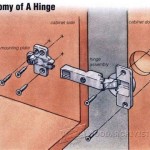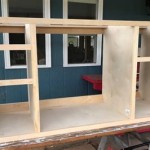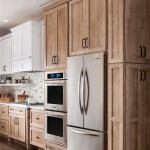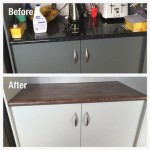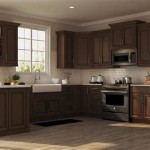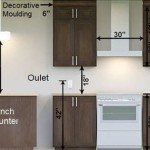```html
Lights Under Kitchen Cabinets: A Comprehensive Guide
Under-cabinet lighting offers a functional and aesthetic enhancement to any kitchen. Installation of these lights addresses the common problem of insufficient task lighting on countertops, improving visibility for food preparation and other activities. Furthermore, under-cabinet lights contribute to the overall ambiance of the kitchen, creating a warm and inviting atmosphere.
This article will delve into the various aspects of under-cabinet lighting, covering the considerations for choosing the right type of lights, installation methods, and the advantages they provide. The information presented aims to provide a comprehensive understanding, assisting individuals in making informed decisions regarding their kitchen lighting needs.
Types of Under-Cabinet Lighting
The selection of under-cabinet lighting options has expanded significantly, offering a diverse range of choices to meet varying preferences and requirements. The primary types of under-cabinet lights include LED strip lights, puck lights, and linear bar lights, each with its own set of characteristics and benefits.
LED Strip Lights: LED strip lights are a popular choice due to their versatility and ease of installation. These lights consist of flexible strips embedded with small LED bulbs, which can be cut to specific lengths to fit the under-cabinet space. LED strip lights are energy-efficient, long-lasting, and available in a variety of color temperatures and brightness levels. They typically adhere to the underside of the cabinets using an adhesive backing, making installation relatively simple. The flexibility of these strips allows for contouring around edges and corners, providing consistent illumination across the entire countertop surface. The primary benefit of LED strip lights lies in their ability to provide a uniform and diffused light source, reducing glare and shadows.
Puck Lights: Puck lights are small, circular lights that are often surface-mounted or recessed under the cabinets. These lights provide concentrated beams of light, ideal for highlighting specific areas of the countertop. Puck lights are available in both wired and battery-operated versions, offering flexibility in installation. Wired puck lights typically require professional installation, while battery-operated versions are easier to install but may require more frequent battery replacements. Puck lights can be a good choice for adding accent lighting or for illuminating small areas where focused light is needed. The compact size of puck lights allows them to be discreetly placed, minimizing their visual impact on the kitchen design.
Linear Bar Lights: Linear bar lights are elongated fixtures that provide a continuous line of light. These lights are typically available in various lengths to match the width of the cabinets. Linear bar lights offer a more integrated look compared to strip lights, as they are housed in a sleek, enclosed fixture. These lights often come with features such as dimming and color temperature adjustment, allowing for customization of the lighting to suit different needs and preferences. Linear bar lights are generally more expensive than strip lights or puck lights, but they offer a higher-end aesthetic and enhanced performance. The uniform light distribution and integrated design make linear bar lights a popular choice for modern kitchens.
Installation Methods for Under-Cabinet Lights
The installation process for under-cabinet lights varies depending on the type of lights chosen and the existing electrical infrastructure. The two primary installation methods are hardwired and plug-in installations, each with its own requirements and considerations.
Hardwired Installation: Hardwired installation involves connecting the under-cabinet lights directly to the home's electrical wiring. This method typically requires the assistance of a qualified electrician to ensure safe and code-compliant installation. Hardwired lights offer a clean, permanent solution without the need for exposed wires or outlets. During a hardwired installation, the electrician will typically run wires from a nearby junction box to the location of the under-cabinet lights. The lights are then connected to the wiring, and a switch is installed to control the lights. Hardwired installations are ideal for new kitchen builds or renovations where electrical wiring can be easily accessed. The benefits of hardwired installation include a professional appearance, reliable power supply, and the ability to control the lights with a wall switch.
Plug-In Installation: Plug-in installation involves plugging the under-cabinet lights into a standard electrical outlet. This method is generally simpler and more accessible than hardwired installation, making it a popular choice for DIY projects. Plug-in lights typically come with a power cord that can be plugged into an outlet located near the cabinets. To conceal the power cords, various methods can be employed, such as using cord covers or routing the cords behind the cabinets. Plug-in installations are a convenient option for adding under-cabinet lighting without the need for extensive electrical work. The flexibility of plug-in lights allows for easy relocation and removal. However, it is essential to ensure that the electrical outlets are not overloaded and that the power cords are properly managed to prevent tripping hazards.
Considerations for Both Methods: Regardless of the chosen installation method, it is important to consider factors such as the placement of the lights, the availability of electrical outlets or wiring, and the desired control mechanism (e.g., switch, dimmer, motion sensor). Proper planning and preparation can help ensure a successful and safe installation. For example, when installing LED strip lights, it is crucial to clean the underside of the cabinets thoroughly to ensure proper adhesion of the adhesive backing. Similarly, when installing puck lights, it is important to carefully measure and mark the locations for the lights to ensure even spacing and alignment.
Benefits of Under-Cabinet Lighting
The advantages of incorporating under-cabinet lighting extend beyond mere aesthetics, encompassing enhanced functionality, improved safety, and potential energy savings.
Improved Task Lighting: The primary benefit of under-cabinet lighting is the improvement of task lighting on countertops. Overhead lighting often casts shadows on the countertop surface, making it difficult to see clearly when preparing food or performing other tasks. Under-cabinet lights provide direct, focused illumination, eliminating shadows and improving visibility. This is particularly beneficial for tasks that require precision, such as chopping vegetables or reading recipes. Adequate task lighting can also reduce eye strain and fatigue, making kitchen activities more comfortable and enjoyable.
Enhanced Kitchen Ambiance: Under-cabinet lighting contributes significantly to the overall ambiance of the kitchen. The soft, warm glow of under-cabinet lights can create a welcoming and inviting atmosphere, transforming the kitchen into a more comfortable and appealing space. These lights can be used to highlight decorative elements, such as backsplash tiles or countertops, adding visual interest to the kitchen design. Furthermore, under-cabinet lighting can be used as a nightlight, providing subtle illumination for navigating the kitchen in the dark. The ability to adjust the brightness and color temperature of the lights allows for customization of the kitchen ambiance to suit different moods and occasions.
Increased Safety and Energy Efficiency: Under-cabinet lighting enhances safety by improving visibility and reducing the risk of accidents. Adequate lighting on countertops helps to prevent cuts, burns, and other injuries that can occur when working in dimly lit conditions. Furthermore, under-cabinet lights can illuminate potential hazards, such as spills or obstacles, helping to prevent slips and falls. LED under-cabinet lights are also highly energy-efficient, consuming significantly less energy than traditional incandescent or fluorescent lights. This can result in lower electricity bills and a reduced environmental impact. The long lifespan of LED lights also reduces the need for frequent replacements, saving both time and money.
Ultimately the decision to install under-cabinet lighting should focus on the individual needs and preferences of the homeowner. Through careful consideration of the available options and installation methods, the benefits of enhanced functionality, improved safety, and elevated kitchen ambiance may be fully realized.
```
How To Buy Under Cabinet Lighting Ideas Advice Lamps Plus

Why Under Cabinet Kitchen Lights Are A Bright Addition To Your Home

What You Need To Know About Under Cabinet Lighting
Led Under Cabinet Lighting Projects How To Use Strip Lights

How To Buy Under Cabinet Lighting Ideas Advice Lamps Plus

5 Types Of Under Cabinet Lighting Pros Cons 1000bulbs Blog

How To Choose And Install Led Strip Lights For Kitchen Cabinets

Installing Under Cabinet Lighting

Why Under Cabinet Lighting Is A Good Idea For Your Kitchen

Tips To Choose The Best Under Cabinet Lighting In Your Kitchen Hipcouch Complete Interiors Furniture
Related Posts


